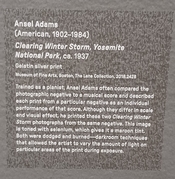athanasius80
Member
I was just reading something online and it mentioned in passing that William Dassonville was skilled at chemistry and was inspired to make his own paper (Charcoal Black) after WWI curtailed his platinum supply. Can anyone verify this or tell me anything about the paper? Just curious,
Thanks!
Chris
Thanks!
Chris










 How old are you?
How old are you?
